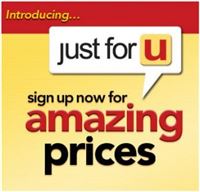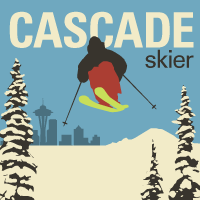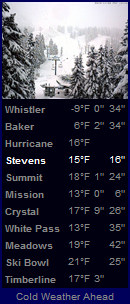Facebook sent me a $50 advertising credit so I decided to use it to promote my CascadeSkier applications and see behind the scenes of a Facebook ad.
Creating the ad was very simple. You set up the graphic, the text, where you want the ad to go (website or Facebook page) and then start narrowing down your target audience. I set up two versions of the ad. One was targeted to people in Washington and Oregon who were in one of the following categories: Outdoor fitness activities, extreme sports, traveling, or Windows. That one encompassed 2.7 million users. The second ad was much more targeted to people who were like the ski areas covered by my apps. That targeted 200K users.
Your two options for payment are per view or per click. Per click is obviously much more expensive, though in retrospect, I would have paid about the same with either choice. You can say how much you’re willing to pay and obviously Facebook shows ads for advertisers who are willing to pay more. I ended up paying $0.07 per 1000 views.
After 2.5 weeks, the ad had been shown to 92,163 unique users and each user had seen the ad an average of 4.6 times. That means I paid about $30. Of the 424,000 times my ad popped up on someone’s screen, it was clicked on a grand total of 23 times. That a 0.005% click through rate. Some quick searching revealed this is pretty standard. Unfortunately in my case there’s no way to know for sure if anybody bought anything when they went to cascadeskier.com because transactions are handled through the Windows Phone store, the Windows 8 store, and CafePress. Let’s assume that everyone who clicked there bought the phone app (because that’s where I make the most money per sale right now.) That would be $45.77 in sales minus the 30% cut that the store takes leaves me $32.04. Then if you take about 20% out for taxes I’m left with $25.63. So paying $30 in advertising gained me $25.63 in a very good scenario. It’s more likely that I only got one or two sales from those clicks.
I’ll let the $50 credit run out, but this doesn’t seem to be a net gain for me. Word of mouth has been a lot more successful and it’s free.

 In addition to regular paper coupons, our grocery store has started a program called “Just For U” where you can clip coupons online. They intend for you to flip through the coupons and add certain ones to your frequent shopper card. Those items show up in the phone app and you are supposed to go buy those specific items. I’ve never been one for clipping coupons, but every once in a while, I go to the site and click Add on every single coupon. We use OneNote to track our shopping lists so their app has no appeal to me. I save a few bucks here and there, but it’s not really worth my time to clip these virtual coupons.
In addition to regular paper coupons, our grocery store has started a program called “Just For U” where you can clip coupons online. They intend for you to flip through the coupons and add certain ones to your frequent shopper card. Those items show up in the phone app and you are supposed to go buy those specific items. I’ve never been one for clipping coupons, but every once in a while, I go to the site and click Add on every single coupon. We use OneNote to track our shopping lists so their app has no appeal to me. I save a few bucks here and there, but it’s not really worth my time to clip these virtual coupons. I’ve spent way too much time working on my most popular Windows Phone app this winter. Version 3.0 hit the marketplace in November and I just released version 3.5. There have been numerous updates for various things but biggest changes were support for multiple live tiles and live tiles that flip over to reveal a one day weather forecast. The updates have been very well received and it’s very rewarding to see the positive reviews fly in. Right now this is the #10 paid app in the sports category. I realize that’s not saying a LOT, but I’m still proud of it.
I’ve spent way too much time working on my most popular Windows Phone app this winter. Version 3.0 hit the marketplace in November and I just released version 3.5. There have been numerous updates for various things but biggest changes were support for multiple live tiles and live tiles that flip over to reveal a one day weather forecast. The updates have been very well received and it’s very rewarding to see the positive reviews fly in. Right now this is the #10 paid app in the sports category. I realize that’s not saying a LOT, but I’m still proud of it. Back in 2007 I wrote about the
Back in 2007 I wrote about the 
